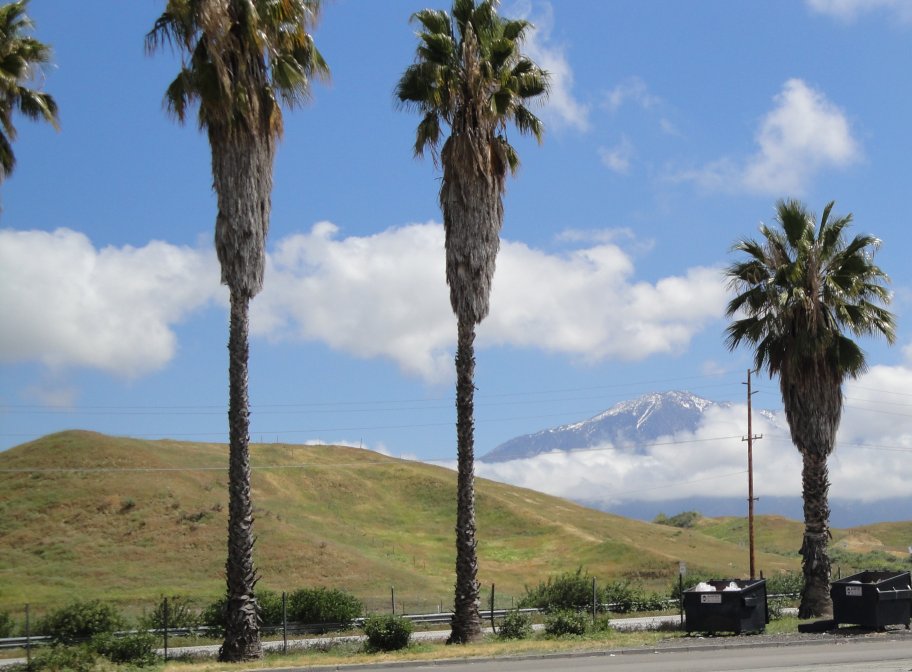
It has been very windy today and I can understand why they built all the windmills as we drove through the forests of them to get from the coast to Palm Springs.
Wind power was the topic of NPR’s Science Friday a few weeks ago, this time from Oklahoma. If you read between the lines, you understand why alternative power is still alternative. When one of the producers of wind turbines was asked why he wasn’t selling more in windy Oklahoma, he honestly responded that electricity rates were too low. His turbines couldn’t compete with the stuff from the grid. There’s more.

I generally favor a diverse portfolio of energy. I am especially fond of biomass fuel, specifically wood chips. But I recognize that even with this simple and well-known fuel there are problems. The biggest challenge to almost all fuels is that they are not where you need them to be. I have acres of wood literally rotting away, but gathering it up and transporting it cost more than it is worth.
What annoys me about some of the alternative fuel advocates is their unjustifiably smug attitude that they have found some big thing and that the only reason it is not widely used is because everybody else is stupid or “big companies” are too greedy to allow it. Besides overlooking obvious drawbacks in the fuels themselves, they are almost always overlooking costs and troubles of transport and distribution. They sort of assume these are free or should be covered by someone else.
So let’s talk about wind power. Wind is free; capturing it is not and neither is getting it from where the wind is blowing to where the energy it produces will be used. A caller to the NPR program talked about getting off the grid with wind power. The guy who sells the turbines admitted that you really need the grid. Wind is unreliable and if you wanted to be off the grid, you would have to invest around $100,000 for all the back-up systems you would need to keep the lights on. The grid costs money to build and maintain. If you account only for the cost of the turbines, you are missing the biggest investments. It is like the kid who thinks he pays the whole cost of a car by filling up the gas tank on weekends.
Most people will not have their own wind turbines. That means that the turbines will be some distance from the consumers. The wind blows mostly on the plains and in the ocean, far away from cities and factories. So we need transmission lines. But we need more than the kinds of transmission lines we have already. Big power plants need transmission lines, but they are at least coming from the same place. Wind turbines are by necessity spread out. You need transmission lines from the wind farms to the cities, but you also need lines between and among the turbines.
Transmission lines are not free and they are not 100% ecologically benign. Each time you build transmission lines, you also cut through the environment, across streams and migration routes, to build roads to service the line and you build pylons every 100 yards. That’s a lot of rock, steel and concrete when you add it up over many of miles, not to mention lots of gas burned by crews building, checking and maintaining it all. So when anybody tells you that a wind farm takes up only a couple acres, recall the many miles of transmission lines. I personally have eight acres under power lines. I can’t grow trees there and while I think it is good to have it as edge community (it can be managed as excellent quail habitat) too many of these kinds things will fragment environments.
The fact is that we use carbon based fuels because they are cheaper, easier to move and more convenient to use than alternatives. When alternatives get to be cheaper, easier and more convenient, they stop being alternatives and just get to be mainstream. That is what it means to be a viable alternative. As long as earnest advocates have to try to convince skeptics about its virtues, it is not viable. Energy consumer really aren’t that dumb. When something really is cheaper and easier it won’t take earnest advocates; they try very hard to get more of it.
Wind, solar and other alternatives are indeed getting cheaper. When their time comes, there will be no stopping them. (I assume that the wind turbines we passed make some money.) Until that time artificially pumping them up won’t really make it happen. And we have to remember that no form of energy is trouble free. There are always trade-offs.
